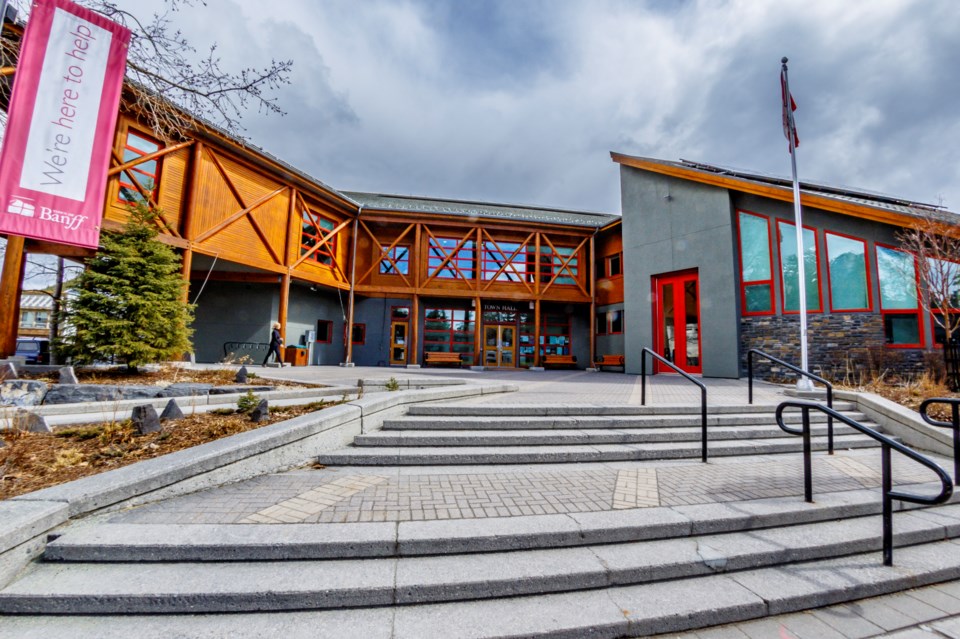BANFF – The municipalities of Banff, Canmore and Jasper have their fingers crossed that their importance as tourism-based communities to provincial coffers will be recognized in the upcoming Alberta government budget.
Two new reports are being used to help build the case for recognition as tourism-based communities, with Banff Mayor Corrie DiManno and Banff Town Manager Kelly Gibson hoping to get some face time with provincial figures when they are in Edmonton for the Alberta Tourism Advocacy Summit Feb. 27-28.
The United Conservative Party government’s 2023 budget is also set to be delivered on Feb. 28, the first day the spring legislature sits.
“We hope to see some progress coming out of this budget,” said Gibson during a Feb. 14 council meeting.
As part of a contract with Verum Consulting, two reports were prepared to highlight the importance of Banff, Jasper and Canmore to the province: Economic Impacts of Tourism in Alberta Rocky Mountain Communities, and Alberta Tourism-Based Communities: Costs & Fiscal Capacity To Support Visitor Populations.
One of the key findings that came out of the study looking at the economic impacts of tourism showed that Banff, Jasper and Canmore contribute a disproportionate amount of tourism gross domestic product (GDP), jobs, and taxes.
Collectively, the three mountain communities attracted $2.3 billion in visitor expenditures in 2019, contributing $2 billion in total GDP, 23,600 jobs and $308 million in taxes to the economy.
As a result of the COVID-19 pandemic, the Rockies region has lost $1.3 billion in visitor expenditures, which would have contributed an incremental 1.1 billion in GDP, 13,300 jobs and $174 million in taxes.
At between 50-60 per cent of visitor expenditures in the Rockies, the Town of Banff is the most significant contributor to the provincial economy of the three mountain communities, contributed 1.2 billion to GDP, 13,800 jobs and $182 million in taxes in 2019.
Banff also experienced the greatest decline in the share of visitor spending from 2019 to 2021 from approximately 60 per cent to 51 per cent. Its contribution decreased more than 50 per cent during the pandemic, down to $531 million in GDP, 6,270 jobs and $80 million in taxes.
In the absence of the pandemic, the report estimated Banff would have exhibited growth in visitor expenditures and economic impacts – up to approximately $1.5 billion in expenditures, $1.3 billion in GDP and 15,000 jobs.
DiManno said the statistics in the reports, particularly around the COVID-19 pandemic, were very sobering.
“It really demonstrates how hard we were hit as an economy, and seeing those numbers gave me pause for sure,” she said.
“I think it helps to demonstrate that when we are hurting economically the province is as well, and on the flip side, when they’re investing in us, then they’re investing in themselves as well.”
At a Feb. 21 Canmore committee of the whole meeting, CAO Sally Caudill said Banff, Canmore and Jasper have been advocating for a special tourist recognition from the province, rather than looking for resort municipality status as is featured in British Columbia.
“We want to work with the province where they’re interested and politically able to go,” she said.
Caudill highlighted in her roughly 15 years with the Town, this go-around is the strongest reception the municipality has received from the province about potentially receiving a special tourism status. Banff, Canmore and Jasper have regularly met with multiple provincial ministers to discuss the issues faced by the three communities.
She said the Town of Canmore often heard from the province in the past that if there’s a funding deficit, the municipality should increase property taxes because the province considers them to be low compared to other municipalities.
But with the property value in Canmore skyrocketing, Caudill said it is not often a true reflection of high property value assuming residents can stomach higher taxes.
“It’s not an indicator as an example of an affordability of a home, but the province uses it as an indicator to the affordability of a home,” she said.
Canmore Mayor Sean Krausert said there is no doubt that study after study shows a vast difference between the three tourism-based communities and other communities that have tourism.
"There’s a clear differential and it’s being born by our own taxpayers, which is not sustainable in the long run,” he said.
Previously, the provincial government allocated $10 million for Banff, Jasper and Canmore linked to additional costs or lost revenues associated with the COVID-19 pandemic. Known as the Municipal Operating Support Transfer (MOST) grant, Banff saw about $4.7 million of the $10 million.
DiManno said the MOST grant demonstrates the province understands the challenges.
“I think that bodes well for these conversations we’ve been having with our provincial counterparts in terms of a tourism-based community recognition,” she said.
“I’d say those conversations have been positive and there seems to be traction in them understanding the case we are building. We will continue to push really hard up until they go into session.”



